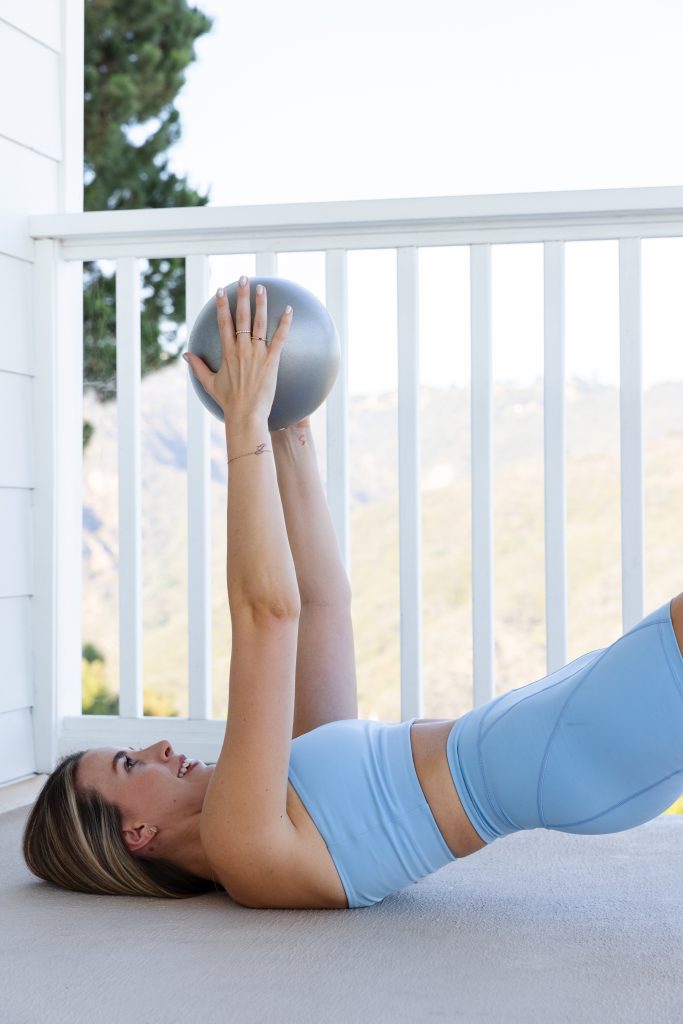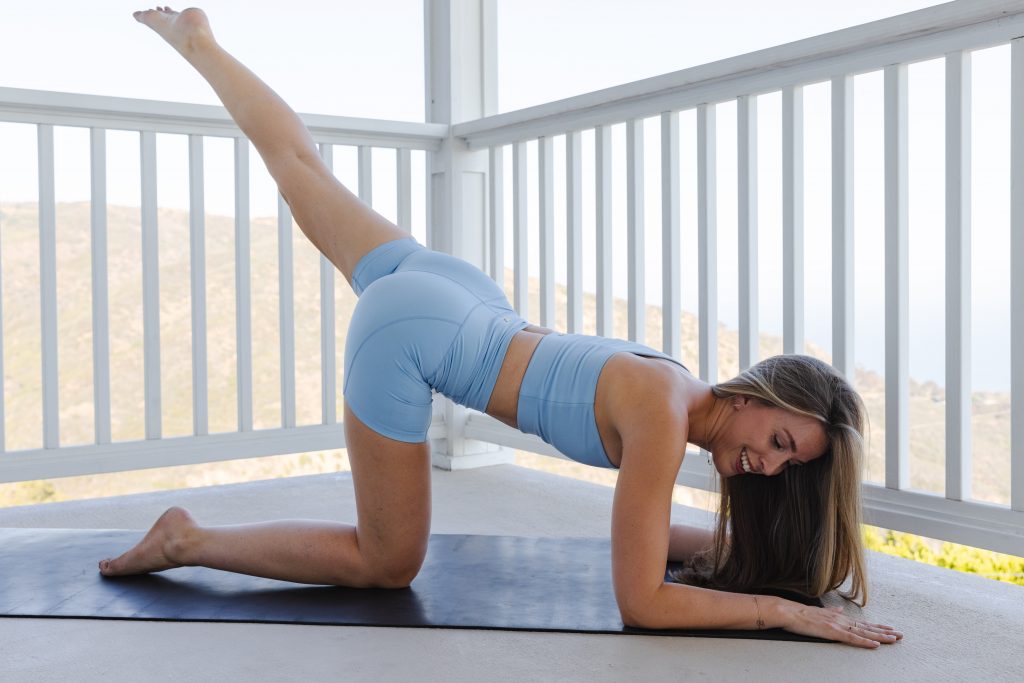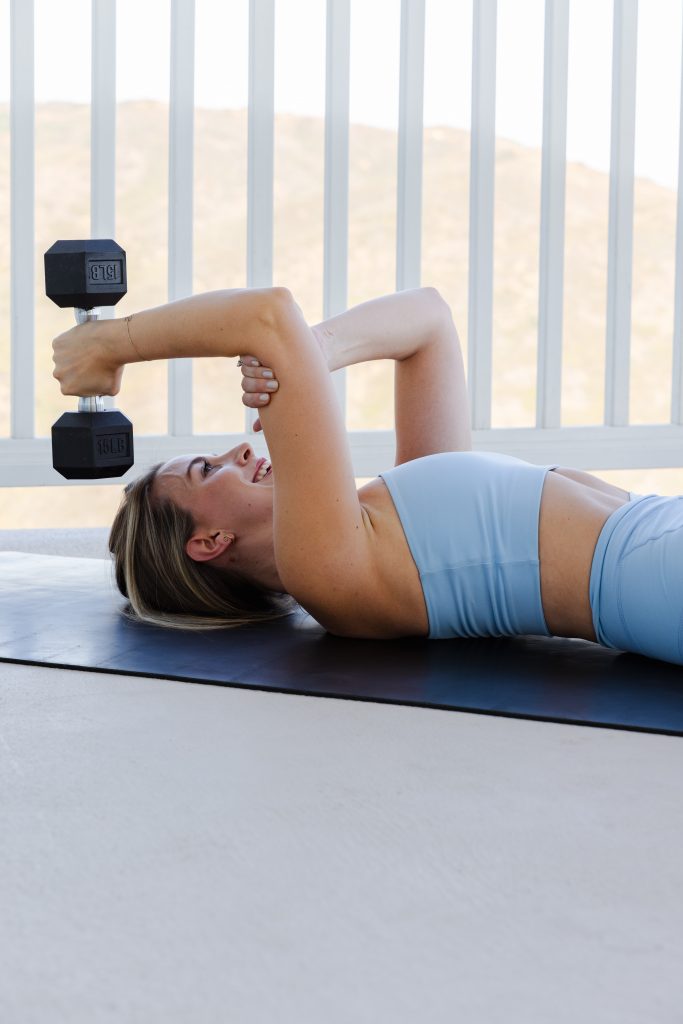Types of exercise
Recovery
Fitness myths
Evlo Programs
BODY COMPOSITION
All
Browse by category
Browse by category
Pilates: Is it enough?
Payton Busker
9/02/2022
Written by

ab workout, abdominal strength, at home workout, Evlo Programs, pilates, posture, stability, strength training, strength training for women
Pilates, a branch of exercise created by Joseph Pilates, has caught the attention of social media outlets over the last year. I can’t seem to scroll through TikTok/Instagram without seeing someone on a Reformer with large text over the top claiming “I just started Pilates 2 weeks ago and I have a whole new body” or “POV: When you stop weight lifting and get the long/lean body of your dreams by doing Pilates”. Of course, this language and messaging isn’t necessarily coming from the Pilates powers-that-be, but it can be damaging nonetheless. Should we all just hang up our other forms of exercise and switch exclusively to Pilates? Would it be “enough” to sustain us long term? Is there any validity to this messaging? Let’s dive in!
Background
It’s important to give a little back story on how Pilates was created! Joseph Pilates initially developed this system during WWI as a way for injured people to be able to exercise. Interestly, he rigged up his first “apparatus” using springs from a hospital bed for resistance. Once he moved to NYC, he became very connected to the New York Ballet and thus was born the relationship between the dance world and Pilates! Click here for a more in-depth history.
As it functions today, there are many different facets and types of Pilates. Most can be separated between “Classical” and more modern takes on the system. This style of exercise can be performed on a number of different apparatus:
- Mat
- Reformer
- Tower
- Cadillac
- Chair
- Barrel
Excluding Mat Pilates, the other apparatus feature spring systems that can be used to create increased external resistance for the various exercises.
My personal experience with Pilates began in college. I started going to a more “contemporary” studio in Austin that specialized in group Reformer classes that combined classical Pilates with HIIT. Everything was performed in time intervals as compared to repetitions and the pace was QUICK. The classes were large in comparison to traditional classes as the studio had 11 machines. After working at the front desk in exchange for a membership, I became mat Pilates certified through Power Pilates and Reformer certified through the studio itself.
These classes were TOUGH. They often prided themselves on burning more calories than a typical Pilates class and even combined cycling in some of their formats. I usually left class feeling completely exhausted and constantly sore. But looking back to this time in my life, I rarely knew what muscle groups were actually being targeted in each exercise and didn’t have muscle muscle mass to show for it.
My experience
In PT school, I found myself gravitating towards these same types of workouts/studios. In hindsight, adding these high-intensity “Pilates-style” workouts on top of the highly-stressful time period that is PT school was probably not my best choice. Lack of sleep, heightened stress, and non-targeted high-intensity classes was NOT the environment for muscle growth.
As a practicing PT, I was lucky enough to spend a few of my treating years at a clinic that had 3 Reformers. I led more “classical” Reformer solo sessions, duets, and trios in addition to treating patients. This opened my eyes to the whole other side of the Pilates world, the traditional side, that I would now argue is the much safer (and more effective) iteration of the system.
It is this Classical side that I will break down in regards to pros, cons, myth busting, and how to integrate it into your routine.

Pros
Most Classical Pilates classes are both low-impact and low-stress.
One of the leading arguments I see on social media for “Team Pilates” is that the classes are low-impact. Because of the apparatus used and/or exercises employed in Mat Pilates, this is true. You will typically not see much jumping or high-impact moves in a traditional Pilates class (jump boards aside). For people with chronic joint pain, limiting high-impact moves while establishing a strength training routine is often beneficial.
Simultaneously, these classes typically do not over-stress your entire system and tend to avoid excessive central fatigue. When our systems are not in a constant state of fight or flight, we are able to better recover from workouts and other daily stressors. This may allow Pilates-goers to better adapt to the stimulus they receive from a Pilates class and gain strength/slight muscle hypertrophy.
Untrained individuals may see greater results when adopting a Pilates routine.
Traditional Pilates can be a great point of entry to exercise for those without a history of exercise. Someone who does not have a regular exercise routine already established will most likely note both strength and some hypertrophic improvements from many forms of exercise, Pilates included. Especially when under the guidance of a certified Pilates instructor, Pilates can be a safe and effective way to establish a fitness routine.
Improvements in mobility may come as a result of improved stability and decreased system stress.
Our nervous system holds a lot of the control over our mobility. When we provide our central nervous system with better inputs (i.e. stability, decreased system stress, etc.) it can provide us with better outputs (i.e. improved mobility and decreased sensations of “tightness”)!
Traditional Pilates exercises and classes often focus on stabilization. These “good inputs” signal to our brains that we are safe and can therefore move in greater ranges of motion without risk for injury.
Many Pilates classes include neuromuscular re-education for the abdominals.
It is very common for us to become disconnected from the various levels of the abdominal muscles. By incorporating breathwork and abdominal stabilization exercises, many traditional Pilates classes emphasize improved brain-body connection to the abdominals. This reconnection can allow for improved strength and hypertrophic changes going forward.

Cons
Most Pilates exercises primarily tap into type I muscle fibers.
Type I muscle fibers are the smaller muscle fibers that make up a muscle’s structure along with the subtypes of type II muscle fibers. Type I muscle fibers are more of our endurance muscle fibers and are slow to fatigue. These muscle fibers also “recycle” very quickly and can typically be tapped back into after just a few moments of rest.
It is certainly not bad or wrong to tap into these muscle fibers. However, without tapping into type II muscle fibers, muscle hypertrophy will be fairly difficult. This is because the type II fibers are the larger fibers that make up the majority of the muscle’s mass. We need to effectively target these fibers in order to move the needle for muscle hypertrophy.
It can be difficult to opposite position load the muscle with an apparatus.
Opposite position loading is one of the key components of effective strength training. This occurs when the line of force directly opposes the line of pull from the muscle. Although this can be done on an apparatus, it is not something that is typically discussed or emphasized in trainings. Remember that the body is a system of levers and physics plays a huge role in the actual load to the muscles!
Low-impact does not always equal joint-friendly.
Although most Pilates classes are low-impact (as discussed above), they are not necessarily joint-friendly! Read this previous blog post to learn more about this topic!
Compound moves may be good for stability, but not the best for muscle hypertrophy.
Many Reformer exercises are more compound movements. Compound movements can be great for stabilization, but often miss the mark when it comes to individual targeting of a muscle.
This is because each muscle has a unique lever and position in which it is most optimally loaded. Exercises that focus on targeting many muscle groups at once will inevitably under-target/load some while potentially overloading others.
This can also decrease the amount of motor output to individual muscle groups. When our nervous system has more to focus on, it has a decreased ability to send signals to specific muscle groups. For example, we are able to get slightly more motor output to the left biceps in a unilateral biceps curl as compared to a bilateral curl with the same amount of weight!!
Myth Busting
“Pilates will make you long and lean”.
There are few reasons why this statement is both a myth and why it can be problematic in and of itself.
First of all, the length of your muscle cannot be changed. Your muscle is anchored to bone at proximal and distal attachment sites and these two places are “fixed”. While the relationship between the individual sarcomeres within the muscle can change to improve flexibility, a muscle is not made “longer” by doing Pilates (or any form of exercise for that matter).
Secondly, “leanness” or the percentage of body fat someone has primarily changes through diet, not exercise. We often overestimate the effect of exercise on our leanness and underestimate the effect of diet. It is not Pilates itself that is significantly contributing to one’s leanness, but rather a combination of genetics, background of activities (i.e. many former dancers), and how they eat.
Thirdly, this statement amplifies fitness culture’s call for us to be our “smallest selves” instead of our healthiest selves. It creates an unjustified fear around lifting weights. Implying that “lifting weights makes you bulky” while “doing Pilates makes you lean”.
It loses sight of the importance of building muscle, especially in our 20s and 30s. This is not to say that muscle growth and fat loss can’t happen simultaneously OR that aesthetic goals are bad or wrong. But I urge you to consider the importance of muscle building through strength training highlighted in the linked post above!
“Pilates will ‘fix’ your posture”.
As a treating physical therapist, it was never my goal to “fix someone’s posture”, but rather to give them the ability to move in and out of different postures with ease. Because there truly is not one perfect posture.
We get in trouble when we remain in fixed postures for extended periods of time. So while Pilates can help give you the ability to flow and move between different postures, I would not recommend relying on it to “fix” your postural issues.
How we incorporate Pilates into Evlo
As with many different schools of exercise, we put our own “Evlo spin” on Pilates. Our Wednesday Burn class is our take on a Pilates-style core class. We move slowly and target muscles like the abdominals, obliques, and back regularly and occasionally add in an upper or lower body muscle group to the session. This class is low to ground, but will leave your muscles burning.
In true Evlo-style, this class is not only low impact, but also joint friendly. We make sure to give numerous modifications and anatomical cues to ensure that members feel good while effectively targeting the intended muscle group. This includes avoiding excessive planking activities and instead focusing on a variety of stabilization and hypertrophic exercises for the core.
We include these Burn-style moves and components in our Build and Burn classes. These classes combine our unique lifts with Pilates-style moves and drop sets.
If you are an Evlo member who enjoys adding in-person Pilates sessions into your routine, read this previous post on how to best incorporate an external class into your Evlo schedule!
So… Is it enough?
Here at Evlo, we believe that strength training should be the cornerstone of any fitness routine. We believe that the most effective form of strength training ensures optimal opposite position loading, joint biomechanics, activation of type I/type II muscle fibers, and appropriate programming. Pilates can be a wonderful addition to this strength training program because of the many “pros” listed above!

Join our community where you no longer need to deplete yourself to see fitness results.